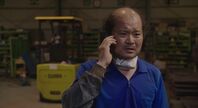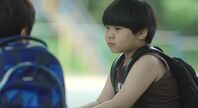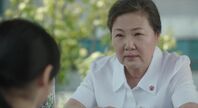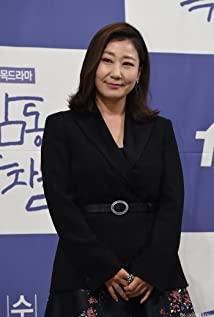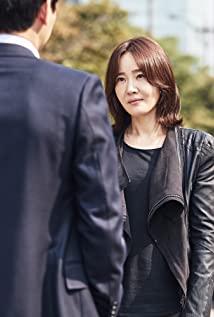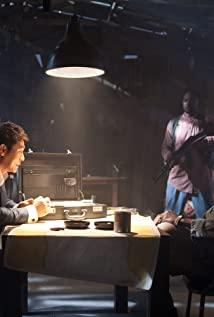The mid-1990s to 2006 was a decade of blossoming Korean cinema. In the past ten years, South Korea has produced many excellent works with diversified themes, such as "Life and Death", "Kind Gold", "Memories of Murder", "Spring, Summer, Autumn, Winter and Spring", and the "author's film" and "genre film" blended together. . In 2006, the South Korean government began to reduce the "film quota system", and the protection of local films was relaxed. At the same time, affected by the global financial crisis in 2008, South Korean films declined. With the improvement of the economic situation, Korean movies have quickly emerged from the trough and have shown a trend of rapid revival. After the recovery, Korean films have been well transformed in many aspects such as genre creation, cultural expression, and industrial development, and the overall development has become more balanced, mature and stable. Korean films pay attention to the development of the film industry and invest a lot of manpower and material resources in them. The continuous development of post-production technology makes Korea highly competitive internationally. In terms of content, Korean film works are mostly original. On the basis of learning from the commerciality of Hollywood movies, it pays more attention to innovations in the way of storytelling in movies. Work originality, capital operation and technological innovation have gradually become the three magic weapons for the longevity of the Korean film and television industry. The open grading system of Korean films is also the key to the flourishing of their film and television works. As early as 1998, when South Korea entered the era of Kim Dae-jung, the degree of political democracy in South Korea surpassed that of the past. South Korea officially ended the film and television censorship system and replaced it with a grading system. "National policies cannot be an obstacle to industrial development." Kwon Ki-young, chief representative of the Beijing Representative Office of the Korea Cultural Industry Promotion Institute, once mentioned. In a relaxed political environment, Korean films have opened up a path for realistic genre narratives. Korean films combine Korean history, present and future social problems and dilemmas, using genre narratives as creative resources and cultural reflections as nourishment, giving birth to a large number of thinking at the sociological level, artistic and artistic. To achieve breakthroughs, there are also nationalized films with strong box office appeal. Whether it is comedy, thriller, sci-fi or ethical themes, Korean films insist on exposing social reality. The social problems presented in the film arise directly from the real dilemma in the process of national development in this country. The frequent problem of child sexual abuse has been brought to the surface of reality again and again, and it has also been put on the stage of movies. Based on a true incident at a school for the deaf in Gwangju, "The Crucible" depicts a tragedy caused by sexual violence, and the school's teachers and human rights activists uncover the story behind it. The film sparked a discussion about the protection of vulnerable groups in society. "Su Yuan" was adapted from the "Naying Incident" in 2008. The 8-year-old daughter Kim Naying was forcibly dragged to the bathroom of a nearby church on her way to school and was beaten and sexually assaulted. The court sentenced the accused to 12 years in prison. Since then, the social movement to abolish the validity period of child sex crime prosecution and to demand more severe punishment for sex crime has continued to this day. At the same time, the Korean film's exploration of society is also constantly improving itself with the maturity of its thoughts. Faced with the same problem, Korean filmmakers may choose completely different thinking angles and narrative types at different times, and at the same time, they will choose completely different expression angles and expressions, and put forward different social thinking. "The Furnace" focuses on the injustice of justice and the lack of system, hoping to deter criminals from the level of legal punishment. "We fought all the way, not to change the world, but to prevent us from being changed by the world"; "Su Yuan" It is described from the psychological trauma of the victim's family, including laughter, criticism, cruelty and touching, praying that people will give the victim more space and tolerance. "Su Yuan" has a peaceful mind, eloquently, with laughter in tears. Although the ruthlessness of the onlookers, the irresponsible exposure of the media, and the rigid indifference of legal procedures are also vividly reflected, the focus is still to show a candlelight in the dark night, "The loneliest person is the kindest, and the person who has suffered smiles. the brightest". At the same time, the Korean film's exploration of society is also constantly improving itself with the maturity of its thoughts. Faced with the same problem, Korean filmmakers may choose completely different thinking angles and narrative types at different times, and at the same time, they will choose completely different expression angles and expressions, and put forward different social thinking. "The Furnace" focuses on the injustice of justice and the lack of system, hoping to deter criminals from the level of legal punishment. "We fought all the way, not to change the world, but to prevent us from being changed by the world"; "Su Yuan" It is described from the psychological trauma of the victim's family, including laughter, criticism, cruelty and touching, praying that people will give the victim more space and tolerance. "Su Yuan" has a peaceful mind, eloquently, with laughter in tears. Although the ruthlessness of the onlookers, the irresponsible exposure of the media, and the rigid indifference of legal procedures are also vividly reflected, the focus is still to show a candlelight in the dark night, "The loneliest person is the kindest, and the person who has suffered smiles. the brightest". At the same time, the Korean film's exploration of society is also constantly improving itself with the maturity of its thoughts. Faced with the same problem, Korean filmmakers may choose completely different thinking angles and narrative types at different times, and at the same time, they will choose completely different expression angles and expressions, and put forward different social thinking. "The Furnace" focuses on the injustice of justice and the lack of system, hoping to deter criminals from the level of legal punishment. "We fought all the way, not to change the world, but to prevent us from being changed by the world"; "Su Yuan" It is described from the psychological trauma of the victim's family, including laughter, criticism, cruelty and touching, praying that people will give the victim more space and tolerance. "Su Yuan" has a peaceful mind, eloquently, with laughter in tears. Although the ruthlessness of the onlookers, the irresponsible exposure of the media, and the rigid indifference of legal procedures are also vividly reflected, the focus is still to show a candlelight in the dark night, "The loneliest person is the kindest, and the person who has suffered smiles. the brightest".
View more about Hope reviews




